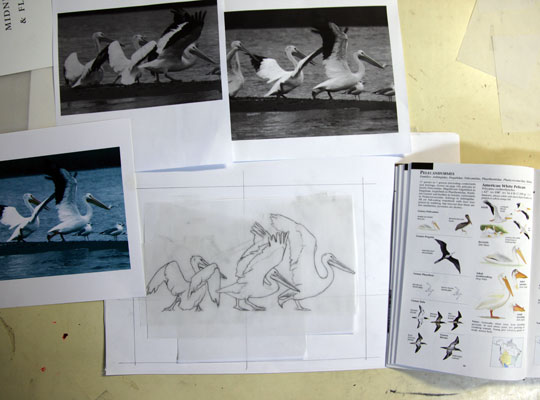Indian Slough• Lost and Found• Pelicans • A Fish

5 October, 2009 • Indian Slough
At the entrance of Indian Slough, on a tall weathered old trunk of wood perched a large white bird. How odd, I thought, an egret way up there. But I was going fishing, and I passed it by without taking out the camera. All morning long, and through the afternoon, I cast to the weeds of Truesdale Lake hoping for a bass, cast after cast, after cast, but nothing–nothing except little birds fluttering in the distance. As I made my way back through the slough toward home, I dragged behind me a large sucker minnow hooked through the lips with the hook of an old Prescott spinner when BANG! A Northern Pike. And the bird on top the old tree was replaced by a sea gull.
My list, toward the end of this first abbreviated fishing season shows, I think, the easiest fish to catch top the list, and that the degree of difficulty increases with each entry. Not that it is ever easy. I expect it will become harder.
14 October, 2009 • Lost and Found
 Along Point No Point the fishermen cast toward shore. Today I went ashore and combed the beach. Along with various feathers and two large mussel specimens (Pyganodon grandis), I found a small piece of oblong plastic painted like a little blue and yellow fish with two rusted hooks hanging from it’s side: a lure lost by someone who knew what they were doing.
Along Point No Point the fishermen cast toward shore. Today I went ashore and combed the beach. Along with various feathers and two large mussel specimens (Pyganodon grandis), I found a small piece of oblong plastic painted like a little blue and yellow fish with two rusted hooks hanging from it’s side: a lure lost by someone who knew what they were doing.
16 October, 2009 • Pelicans
On October 14 I estimated that there were 200-300 of them at Point Au Sable. Today, along with Sir Mickaelous and Cindyrella, it was reckoned that the number was closer to 1,000. Birds must be coming in from other places, perhaps to join the flock for a flight to Mexico. Pelicans continue to be the central point of ornithological interest. They are large, interesting, relatively easy to approach, and famous, of course, for the pouches they carry beneath their beaks. With long, thick, black-tipped wings, short stubby orange legs, and bodies like water balloons, the physics involved in getting it all airborne is facinating.

For a fish to get into the book, I have to catch one. For a mussel to get in, both shells of an individual must be collected. For a bird, I need an interesting photograph.
19 October, 2009 • A Fish & Some Casting in Cyberspace
Today mine was one of a half dozen boats along Point No Point. The frustration of three friutless hours of casting my prized found lure was heightened with each fish caught by the other fishermen, and there were many. Finally, at 2 pm, a strike. To my surprise, the fish was not the expected Small Mouth Bass, but instead a Walleye Pike. Later, in cyberspace, I learned that casting a deep diving crank bait (like the one I found) into the water is a common method of catching Walleyes. I also learned the identity of the found lure. It is